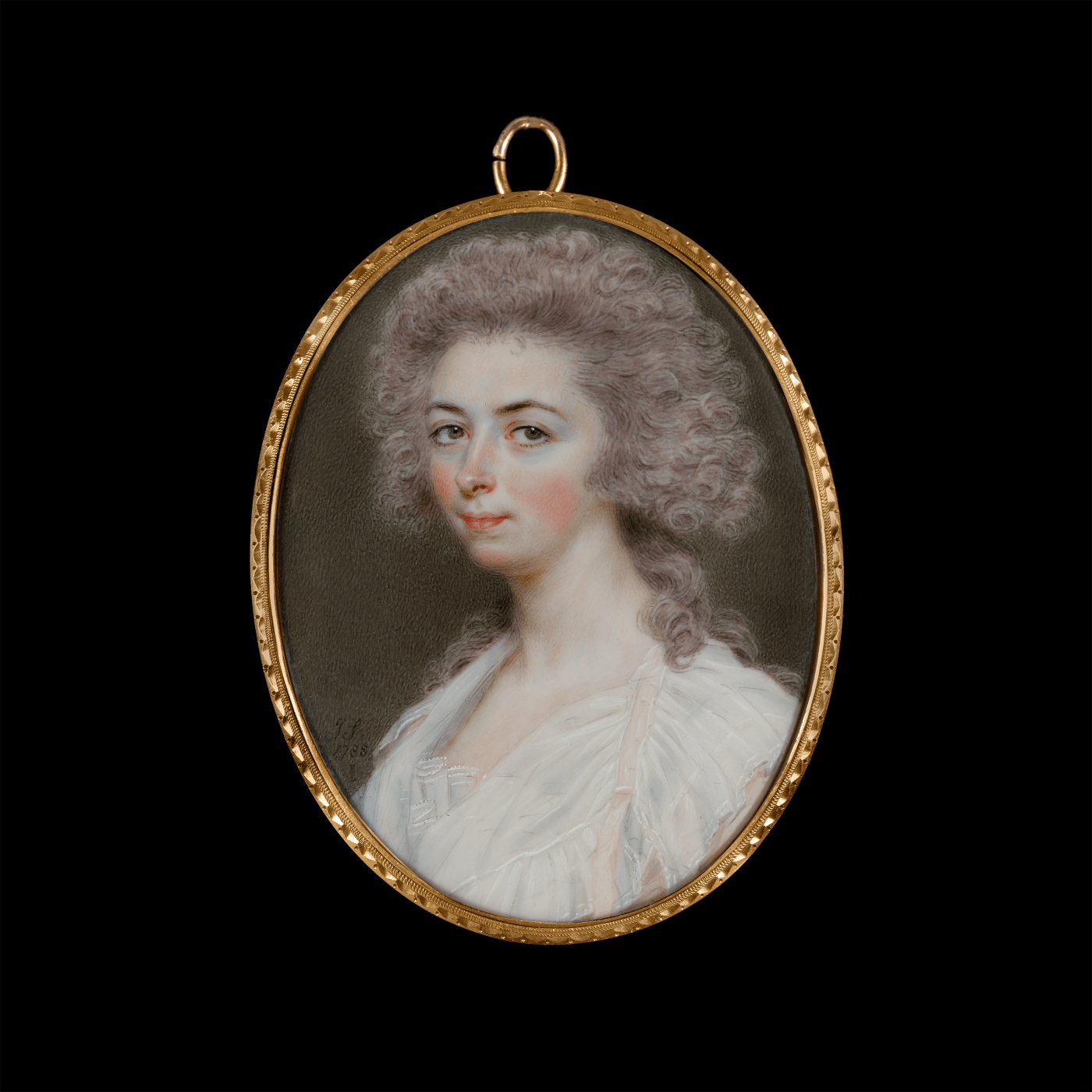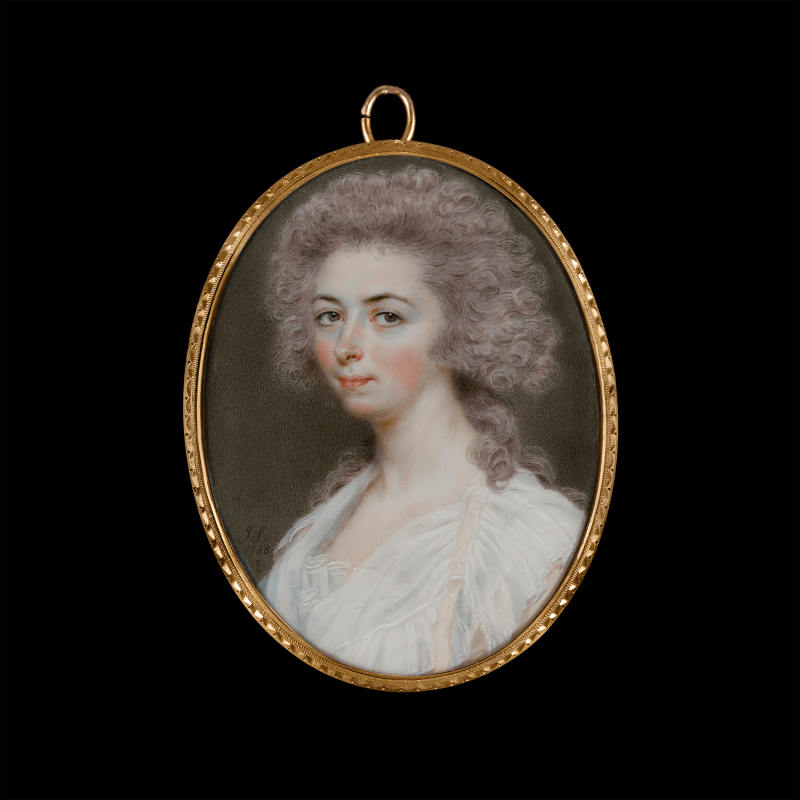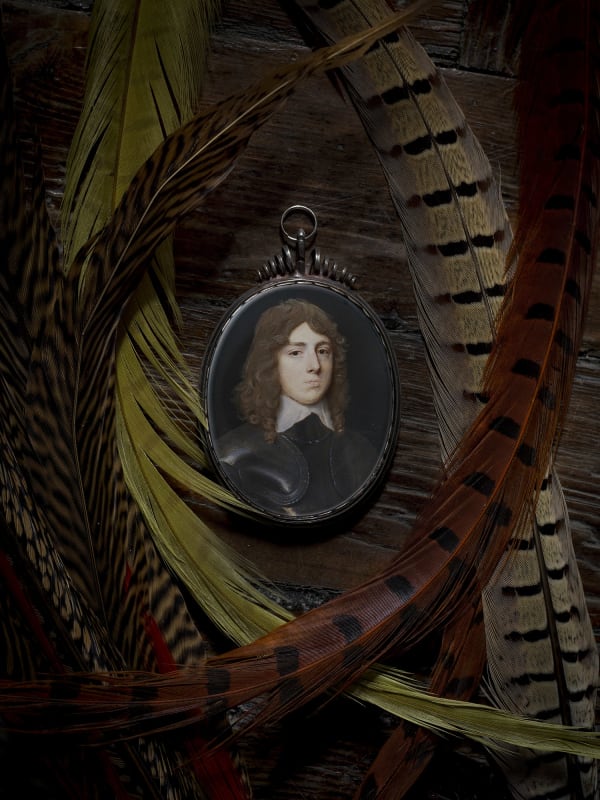Full Biography
The early life of John Smart remains shrouded in mystery, a rather surprising fact given his prominence as one of Britain’s most celebrated portrait miniaturists of the eighteenth century. Recent research by Philip Mould & Company has uncovered mention of ‘John’, son of Philip Francis and Ann Smart, in the baptism records of St. Anne’s Church, Dean Street, suggesting that he was born in London sometime before June 1741.[1] In 1755 Smart became a pupil at William Shipley’s nascent Society for the Encouragement of Arts, Manufactures and Commerce. Here he won the premium in 1758 for his drawing, with his near contemporary, Richard Cosway, securing second place. By 1760 he seems to have set up an independent studio, with no evidence of time spent (as was usual) as apprentice to another artist.
In 1763 ‘Mr John Smart of Dean Street’ and ‘Miss Marianne Howard’ married at Coleman Street Church and it is believed that the pair had three daughters: the first, Maria-Sophia, possibly died prematurely, Anne-Maria and finally Sophia. Later, Smart fathered two further children, John Smart Junior and Sarah, both of whom were illegitimate.[2] His early successful years working in London, from his premises in Dean Street, Soho, instilled him with confidence and ambition and having built a loyal client base [Mrs. Russell, 1781, Edgar Corrie, 1775, both previously with Philip Mould & Company] was elected a Fellow of the Royal Society of Artists (FSA) in 1765, then director in 1772, Vice-President in 1777, and finally President in 1778, a position he held until the society’s liquidation.
The early life of John Smart remains shrouded in mystery, a rather surprising fact given his prominence as one of Britain’s most celebrated portrait miniaturists of the eighteenth century. Recent research by Philip Mould & Company has uncovered mention of ‘John’, son of Philip Francis and Ann Smart, in the baptism records of St. Anne’s Church, Dean Street, suggesting that he was born in London sometime before June 1741.[1] In 1755 Smart became a pupil at William Shipley’s nascent Society for the Encouragement of Arts, Manufactures and Commerce. Here he won the premium in 1758 for his drawing, with his near contemporary, Richard Cosway, securing second place. By 1760 he seems to have set up an independent studio, with no evidence of time spent (as was usual) as apprentice to another artist.
In 1763 ‘Mr John Smart of Dean Street’ and ‘Miss Marianne Howard’ married at Coleman Street Church and it is believed that the pair had three daughters: the first, Maria-Sophia, possibly died prematurely, Anne-Maria and finally Sophia. Later, Smart fathered two further children, John Smart Junior and Sarah, both of whom were illegitimate.[2] His early successful years working in London, from his premises in Dean Street, Soho, instilled him with confidence and ambition and having built a loyal client base [Mrs. Russell, 1781, Edgar Corrie, 1775, both previously with Philip Mould & Company] was elected a Fellow of the Royal Society of Artists (FSA) in 1765, then director in 1772, Vice-President in 1777, and finally President in 1778, a position he held until the society’s liquidation.
In 1785 Smart left for Chennai (Madras), India in pursuit of superior fame and fortune, accompanied by his daughter Anna Maria and later joined by her younger sister, Sophia. Smart was aware that the prosperous merchants, British aristocrats and officials, as well as Indian courtiers such as Muhammad Akli Khan, Prince of the Carnatic , presented abundant demand for his small, portable portraits. His delicate and meticulous style, although more restrained than the virtuoso style of Cosway, soon won him a celebrity for remarkable clarity and naturalism. He worked in India for ten years producing a significant corpus of work
Following the death of his youngest daughter, Smart left India and returned to his London residency in Mayfair in December 1795. During his time away, his fame had spread, and he was able to rapidly re-establish himself as one of London’s leading portraitists. Honing his style industriously, he began to produce both larger miniatures on ivory and finished drawings to satisfy his impressive client base, who now favoured the latest Neoclassical tastes. In 1804 he moved to the affluent Fitzrovia and continued to exhibit at the Royal Academy right up until his death, following a short illness, on 1st May 1811 at the age of seventy.
1 City of Westminster Archive Centre, St Anne’s Soho Baptisms 1 July 1721 - 30 December 1767, vol. 2 [microfilm].
2 D. Foskett, John Smart: The Man and his Miniatures, (London, 1964), p. 11. Smart had these two illegitimate children with Sarah Midgeley, whom although he never married provided financial support for while abroad in Madras.

























